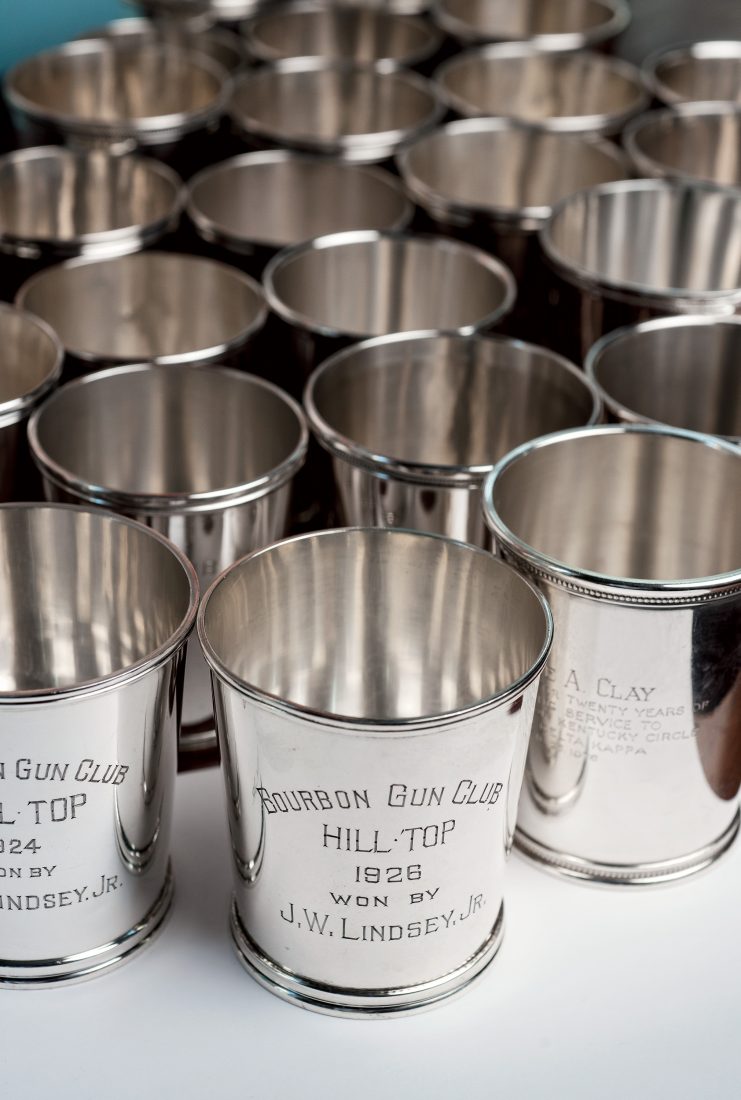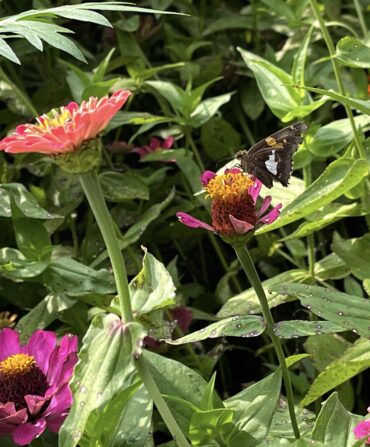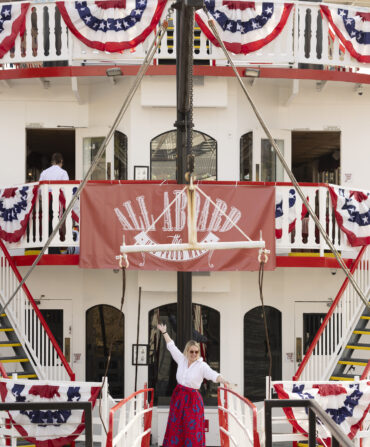When Barry Crume was four years old, his grandmother gave him his first silver julep cup, with President Lyndon B. Johnson’s initials engraved on its base. You might consider this an odd gift for a child regardless of his nascent political leanings, but these cups were popular keepsakes at the time, and the presidential initials had a story.
Crume’s grandmother Jule Weakley Crume attended a girls’ preparatory school in Shelbyville, Kentucky. Though the school eventually closed, one of its buildings had become the Wakefield-Scearce Galleries, a manufacturer of silver julep cups. Beginning with the Truman presidency, Wakefield-Scearce has issued a commemorative cup for each president.
Crume, an Indiana native, might have forgotten about that cup had he not moved to Kentucky as a young man and wandered into an auction house near his home one evening. There, a silver julep cup caught his eye. It sat on a table amid stacks of china and scores of the thin, inexpensive cups that nearly outnumber their red Solo brethren in this part of the world. But this cup was the real deal: heavy and substantial, with a thick beveled base and “Christmas 1924” engraved on its side in Gothic lettering. Like all quality antique julep cups, it told a happy, boozy story lost to time. “I asked the auctioneer to save it for the end of the night when most of the people would have gone,” Crume says, “then buy it for me, whatever it costs.”

Photo: Andrew Hyslop
The first vessel Barry bought at auction.
That felicitous find started Crume on his path as a collector of antique silver barware. Today, a bank of cabinets in his home bar display neat rows of gleaming jiggers, shakers, spoons, martini-mixing buckets, and more than a hundred julep cups. Some he finds in online catalogues or at antiques shows. Others he discovers in small-town curio shops as he travels for work. Many of the cups in his collection are sterling, meaning they contain at least 92.5 percent pure silver, making them more valuable. The others are coin silver, an American standard that got its name from the pre–Civil War practice of silversmiths melting down assorted pounds, francs, and pieces of eight for their craft. Today, the term signifies a composition of at least 90 percent silver.

Photo: Andrew Hyslop
Cocktail Companions
Silver bar spoons.
These smiths practiced their work up and down the Eastern Seaboard, long before Kentucky laid any claim. Drink historians believe the julep (from the Persian word for “rose water”) derived from a sweetened beverage used as a vehicle for medicine. Juleps most likely migrated from Virginia to Kentucky, where records of julep cups given as prizes at county fairs date back to the early 1800s, and the preferred spirit evolved from rum and brandy to bourbon. It wasn’t until 1938 that the julep became the official beverage of the Kentucky Derby, and American whiskey the spirit of choice.
Many of the cups in Crume’s collection originated as prizes at Kentucky county fairs. “They were trophies, the equivalent of blue ribbons,” he says. One of his favorite engraved cups was awarded as a prize to a Mr. J. W. Lindsey, Jr., by the Bourbon County Gun Club in 1926. After some diligent online research, Crume discovered an archival photo of the gentleman sitting at the gun club holding his cup aloft.

Photo: Andrew Hyslop
A 160-year-old cup.
Then there are curiosities. On one cup, a lovely, flowing script marks the date of August 4, 1951, with the single word “Ho-hum.” When Crume joins friends on a dove-hunting expedition, he usually brings along a cup labeled “Best Hound Opposite Sex 1937” as a good-luck charm. If only these engravings could speak.
He and his wife, Laura, love to set out all the cups and let guests pick whichever one strikes their imaginations. That’s when the various sizes come in handy. “I’ve got a good friend who’s a party girl, so I’ll mix her a double Maker’s and ginger in the big sixteen-ounce cup,” Crume says. “But her sister asks for ‘just a small drink,’ so she gets the smallest six-ounce cup with a lower proof bourbon.”
Once a valuable sterling cup disappeared, and after a frantic search through the garbage Crume gave up on finding it again until a guest called to say, “Hey, I found one of your tin cups in the back of my pickup. You want it back?”
Today, that rescued vessel is still in heavy rotation at the bar along with the LBJ cup that started the whole collection. Crume doesn’t want these pieces to stay hidden on a shelf. He wants his friends to enjoy them, to know how to hold them by their rims to let the ice frost the cups undisturbed by fingerprints. “Sometimes I wonder why anyone decided to make a drinking cup out of silver,” he says. “But in my opinion there’s no better way to drink bourbon.”








